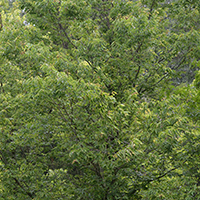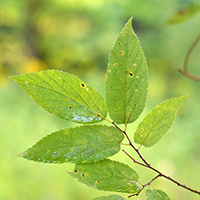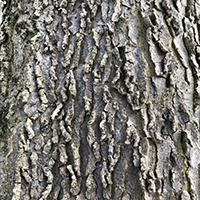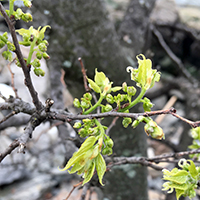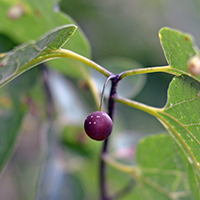What northern hackberry looks like
Size and shape
- Reaches 15 metres high.
- Trunk reaches up to 50 centimetres or more in diameter.
Leaves
- Bluish-green with toothed margins (6 to 9 centimetres).
- Alternate with tapered tip.
- Grow in 2 rows along twig.
- Turn yellow in fall.
Bark
- Grey to light brown with distinct and irregular ridges.
Flowers
- Small greenish flowers.
- Male flowers grow in clusters at the base of new shoots.
- Female flowers grow individually at the base of new leaf stalks.
Fruit
- Red to purple berries with a pitted stone stay on tree throughout winter.
- Grow individually.
Where northern hackberry is found
Northern hackberry is found across Southern Ontario from Windsor to the Ottawa Valley, as far north as the southern edge of the Canadian Shield.
What you need to know to grow northern hackberry
- Moisture: grows best in moist, well-drained soils, but has some tolerance for drought and flooding.
- Soil: adapts to many soil types.
- Shade: grows best in full sun.
Benefits and uses of northern hackberry
Wildlife benefits
Northern hackberry fruits are a food source for wildlife, especially birds and small mammals. Fruits are also a reliable food source for winter birds such as robins. The trees host butterflies such as hackberry emperor and provide shelter to birds.
Commercial uses
Northern hackberry wood is subject to rotting, so it is not widely used. It can be used to make:
- cheap furniture
- boxes
- veneer
Historically, the wood was used for barrel hoops and flooring for pioneer cabins.
Fun facts about northern hackberry
- Northern hackberry can live up to 150 years.
- Northern hackberry fruits taste like dates.
Updated: January 10, 2024
Published: July 18, 2014
